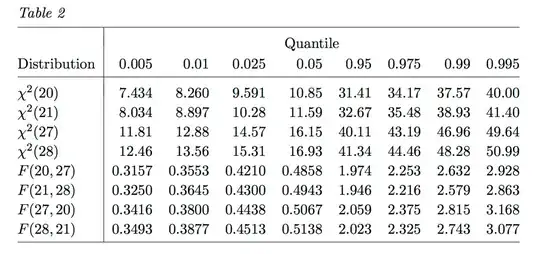Information about the data
For this study, I would like to statistically test how the total length of sparrows affects their survival. Consider here one of the characteristics of the sparrows recorded was total length, which is assumed to be normally distributed.
If this is possible, I would be incredibly grateful if anyone could please help me understand if my assumptions are correct. Many thanks in advance for your help.
Information regarding the data:
In a group of 21 surviving sparrows, the variance of the total length was 11.05 mm2.
In a group of 28 sparrows that subsequently died, the variance of the total length was 15.07 mm2.
The µ of the total length of sparrows that survived was 157.4 mm2
The mean µ of the total length of sparrows that subsequently died was 158.4 mm2
Problems to solve:
I am unsure if I have understood the concepts correctly underpinning how to: -
- Read quantile tables properly for Chi-square and F distributions
- Correct inferences from hypothesis testing
Question
Test the hypothesis the variance of the total length is the same in the two groups, sparrows that did not survive and surviving sparrows.
Quantile Table
Definitions:
- Variance Length of Survivors (VLS)
- Variance Length of Non-Survivors (VLNS)
Hypothesis testing:
- H0: VLS = VLNS
- H1: VLS ≠ VLNS (two-sided test)
- Significance level, p = 0.05
F statistics – testing differences between the mean of two populations (i.e. survivors and non-survivors)
Chi-Squared and F distributions inferred from the quantile table (above):
F distribution for VLS and VLNS:-
F (21, 28) (0.025) = 0.4300
∴ Ratio of the variances for VLNS/VLS = 15.07/11.05 = 1.36
The null hypothesis has been accepted showing the variance of the total lengths of VLS and VLNS are not same when compared to the non-significant F-statistic distribution 0.4943. The ratio of VLNS/VLS is far smaller than the combined F-distribution which tested differences between the mean of both populations. The null hypothesis has been accepted
